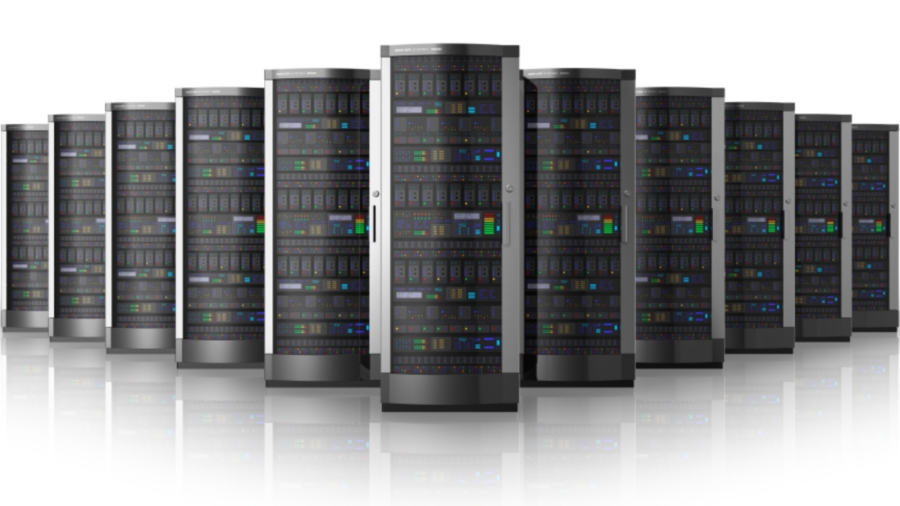Understanding the drivers behind data center demand
The growth of cloud computing has placed considerable demand on today's data centers.

Over the past few years, demand drivers for leased data center space have changed. To gain a better understanding of the changing landscape, 451 Research, commissioned by Vertiv, polled more than 700 decision-makers responsible for selecting their company’s IT and storage services to gain ‘on-the-ground’ insights.
The resulting report: “The Impact of Cloud and the Internet of Things on Data Center Demand”, reveals the role of data storage, cloud adoption and the potential impact of new data generated by Internet of Things (IoT) applications.
At the turn of the millennium, much of the demand for leased space came from either telecom carriers or enterprises. More recently, this has shifted to greater demand from service providers, including public cloud providers, and enterprises seeking space that includes higher-level services.
In response to these trends, particularly that of public cloud adoption, some analyst firms, investors and pundits have forecast significantly reduced demand for leased data center space.
However, many of these negative prognoses exclude the potential demand for leased space from cloud providers themselves and the potential future demand driven by wider IoT adoption. They also do not account for the demand of hybrid data center space, and the fact that not all workloads are shifting to the cloud due to data security, cost or other concerns.
Indeed, as the report makes clear, it’s not all bleak for data center demand. Here, we summarize the seven key findings that will drive current and future demand for leased data center space, along with how they will impact multi-tenant data center (MTDC) providers.
Cloud Adoption Continues
In less than a decade, cloud has gone from the margins to the mainstream, with widespread adoption seeing enterprises continue to shift IT from on-premise data centers to off-premise colocation, hosted private cloud and public cloud environments.
Sign up to the TechRadar Pro newsletter to get all the top news, opinion, features and guidance your business needs to succeed!
While companies are on average retaining as much as 40% of their workloads in-house and up to 36% of workloads in non-cloud environments, most survey respondents plan to increase their use of private and public cloud over the next two years.
IoT Will Drive Data Centre Demand
There was nearly universal IoT adoption activity among our 700 survey respondents. 98% of the enterprises surveyed have at least some IoT activity under way.
However, we are clearly at the early stages of the IoT maturity curve, with about two thirds (64%) identifying their current stage of IoT activity as ‘limited deployment’ or in test or planning.
IoT projects will often require several locations for data analysis and storage. These include: endpoint devices with integrated compute/storage; intelligent gateway devices; nearby devices that perform local computation; on-premise data centers; colocation facilities; managed hosting sites; and/or network providers’ point-of-presence locations.
As well as there being a variety of hosting destinations for data analysis and storage, it’s likely that many deployments will end up storing, integrating and moving data across a combination of public cloud and other commercial facilities – including colocation sites, and/or network providers’ point of presence locations.
Expansion of IoT commitment
Even though it’s early days for most IoT projects, a significant amount of current IT capacity is being dedicated to IoT by those polled. Surprisingly perhaps, over half (54%) of respondents indicated that 26-75% of their current IT capacity supports IoT initiatives.
When asked what they thought the picture might be in two years’ time, 73% said they expected up to three quarters (75%) of data center/cloud capacity will be used to support IoT initiatives.
Analytics Workloads Drive Computing Demands
But it’s not just about storage. IoT data processing offers a great opportunity for data center providers too. ‘Public cloud’ is currently the most popular location (39%) for analysis of IoT-generated data, but by no means holds a monopoly.
Indeed, data processing is distributed between colocation facilities (30%); local computing devices attached to data generators (30%); within network operator infrastructure (31%) and on-premise data centers (35%).
Workloads and Providers
The nature of the IoT workload also has a bearing on the location for IoT data storage and processing. Quality control/tracking systems were most likely to be processed close to the source of data, according to 48% of respondents. Micro-modular data centers are likely to be deployed to meet this requirement, in addition to MTDCs that are located in relatively close proximity.
The ‘Undecided’ Opportunity
Like swing voters represent an opportunity to political parties, enterprises undecided on IoT infrastructure spell opportunity for multi-tenant and micro-modular data center providers.
When it comes to infrastructure suppliers, public cloud providers were cited by a quarter of respondents as the top choice for IoT storage and processing.
There was a fairly even split between public cloud and respondents choosing a mix of public, private and collocated data centers (21%) and 28% chose either network operators (14%) or colocation providers (14%).
Fog Computing at the Edge
The OpenFog Consortium defines fog computing as: “A system-level horizontal architecture that distributes resources and services of computing, storage, control and networking anywhere along the continuum from Cloud to Things.”
There certainly seems to be some early adopters in the ranks of our respondents with a surprisingly high 45% rating themselves ‘familiar’ or ‘very familiar’ with OpenFog.
The key market driver for fog computing is real-time analytics on data streams, selected by over a quarter (26%) of respondents, closely followed by reduced network backhaul costs (24%) and increased application reliability (21%).
Finally, our report identifies the following takeaways for MTDC providers:
- MTDC providers with interconnection or managed services will fare well amid the growing demand for off-premises deployments.
- Managed services that simplify public cloud use or make it more secure, as well as private cloud options, are becoming more important to customers.
- The Internet of Things is no longer a trend that can be ignored by any provider of data center capacity services.
- The public cloud brings specific challenges that colocation providers and telecom operators are uniquely advantaged to address.
- The emergence of IoT creates a new battleground regarding computing capacity location.
- IoT will bring applications and workloads that demand near real-time responsiveness (low latency), which dictates the potential placement of computing capacity closer to the network edge or device to minimize transmission latency impact.
- The fog/edge computing market will drive significant partnership opportunities.
- There will be a marketing focus on evangelizing data center services that support key fog/edge computing.
Beyond these takeaways, data center providers should not only consider opportunities across markets but give special attention to those verticals and countries with the highest proportion of enterprises in the mature planning stages for IoT support.
Italy, for example, had the largest percentage of off-premise organizations using cloud (67%) and China was the most aggressive in using colocation as an IoT data storage environment in the coming year. The most drastic transition related to IoT data storage is the move away from company-owned facilities.
While 71% of all enterprises surveyed currently store IoT data on-premise, this figure is projected to drop to just 27% in a year’s time.
One thing is certain: cloud and the IoT stand to have a considerable impact on data center demand.
In being open to the opportunities these emerging technologies offer, and the demand drivers for leased data center space, data center providers can tap into new markets and stay ahead of the competition. For more on these opportunities, be sure to check out the full report.
- Peter Lambrecht is the Vice President Sales Key Accounts EMEA at Vertiv
- Check out the best dedicated servers
Peter Lambrecht is vice president sales key accounts at Vertiv in EMEA. He is a great leader over 27 years of working experience.
